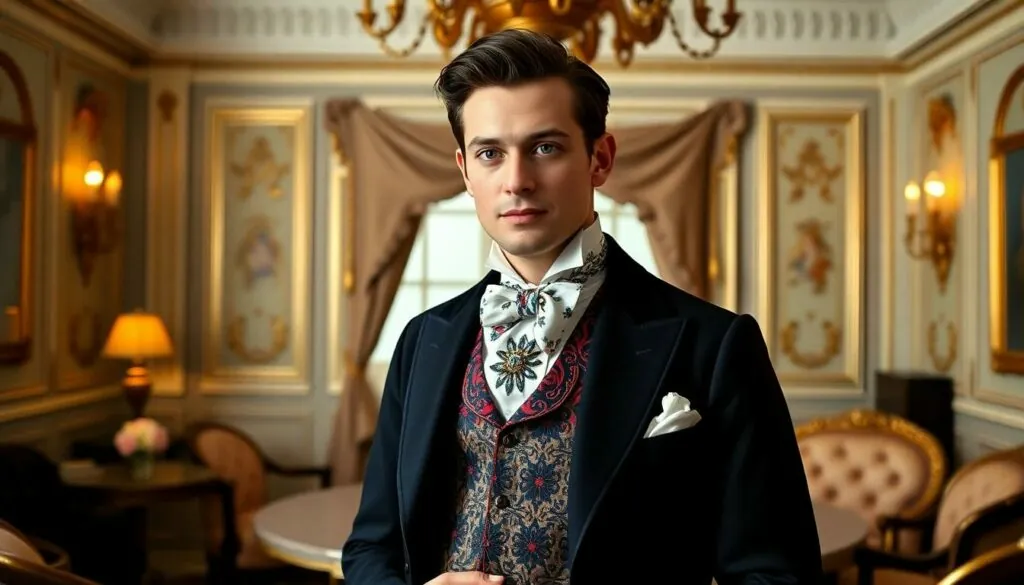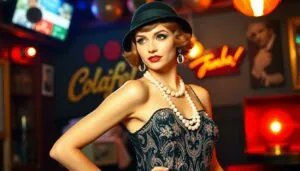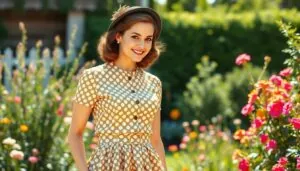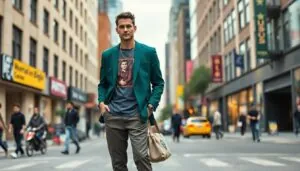Picture this: a dapper gentleman in a tailcoat, frock coat, or perhaps a waistcoat that could make even a peacock jealous. Welcome to the Regency era, where men’s fashion was as flamboyant as a peacock strutting its stuff. From 1811 to 1820, British men didn’t just dress to impress—they dressed to be the talk of the town.
Table of Contents
ToggleOverview Of Regency Era Men’s Fashion
Regency era men’s fashion, spanning from 1811 to 1820, showcased a variety of distinctive styles. Tailcoats dominated men’s wardrobes, usually cut high at the front and longer at the back, emphasizing a slim silhouette. Waistcoats, frequently ornate and colorful, complemented the tailcoats, adding a touch of personal flair.
Shirts, typically made of fine cotton, featured high collars and were often visible beneath the waistcoat. Cravats, worn around the neck and often elaborately tied, served as a critical accessory, reflecting the wearer’s taste and status. Breeches were popular, though trousers began to replace them as the decade progressed, signaling a shift in men’s fashion preferences.
Footwear also played an essential role. Elegant boots, often made from leather and reaching up to the calf, were common. They added to the overall polished appearance that gentlemen strived for during this era. Accessories like gloves and hats, including top hats, helped complete outfits and underscored a man’s social standing.
Overall, men’s fashion in the Regency era represented more than mere aesthetics. It reflected societal values, including the importance of individual expression and refinement. By carefully curating their attire, men sought to assert their identity in a rapidly changing world, making fashion a key element of cultural identity.
Key Elements Of Regency Era Men’s Fashion
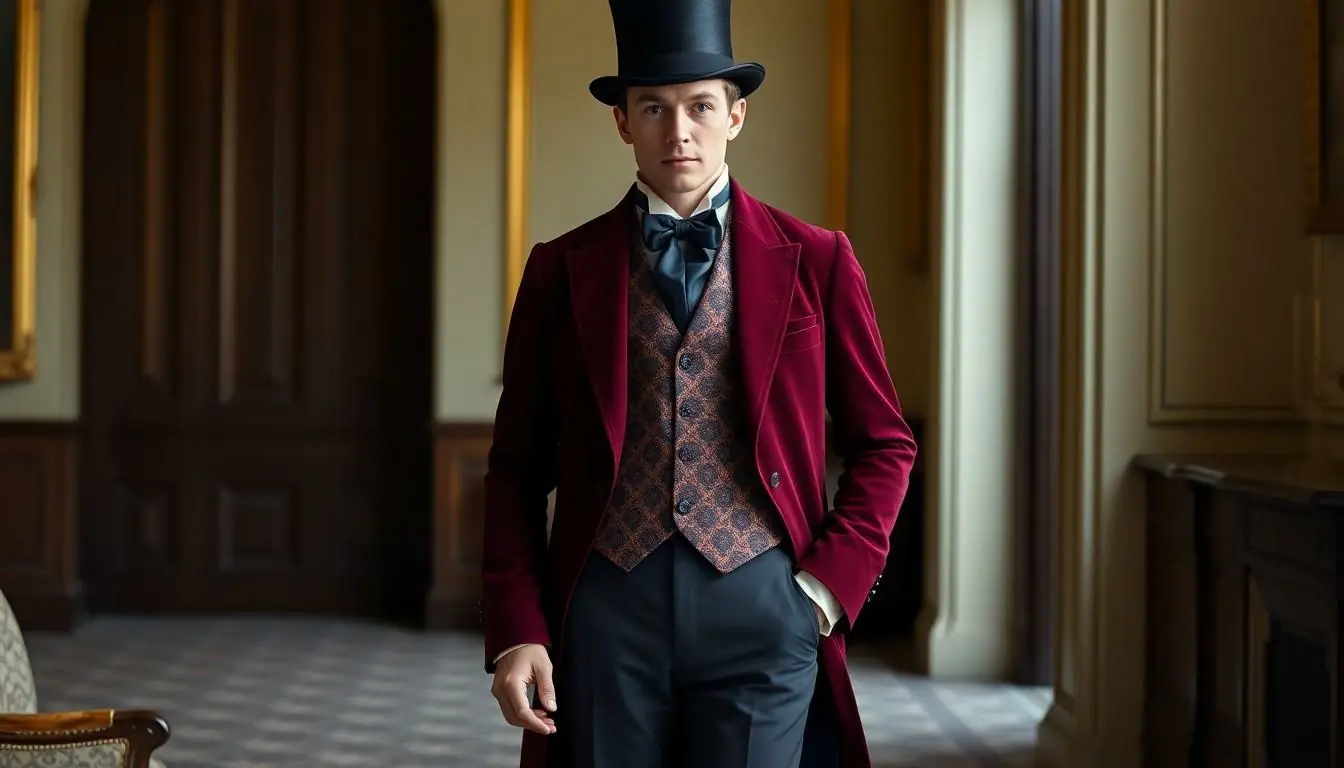
Regency era men’s fashion showcases a blend of elegance and individuality, underscoring social status and personality through clothing choices.
Fabrics And Materials
Silks, velvets, and fine cottons dominated the fabrics used in Regency attire. Tailcoats often featured luxurious wool and silk, providing structure and refinement. Cotton muslins became a staple for shirts due to their comfort and breathability. Waistcoats typically boasted elaborate patterns and textures, enhancing visual appeal with embroidered details. Trousers embraced durable fabrics while retaining a smooth finish, reflecting an evolving style. The careful selection of materials represented not only wealth but also the wearer’s sense of taste.
Color Palettes
Soft pastels and rich jewel tones characterized the popular color palettes of this era. Gentle shades of lavender, pale blue, and ivory often adorned formal attire, projecting sophistication and delicacy. Darker hues like navy, deep green, and burgundy also provided striking options for evening wear. The combination of muted and vibrant colors allowed gentlemen to express their personality, making bold statements while adhering to societal standards. Contrasting waistcoats against tailcoats created eye-catching ensembles, enhancing a gentleman’s overall appearance.
Accessories
Accessories played a vital role in completing the Regency gentleman’s look. Cravats stood out as key elements, often tied in intricate styles to reflect personal taste. Gloves in soft leather complemented outfits, serving both functionality and style. Top hats emerged as symbols of status and refinement, with various styles available for different occasions. Elegant footwear, including leather boots, rounded out the ensemble, emphasizing attention to detail. Each accessory contributed to a polished appearance, reinforcing social standing within elite circles.
Notable Trends In Regency Era Men’s Fashion
Regency era men’s fashion showcases distinct styles that reflect elegance and individuality. Key trends included tailored garments and refined accessories that communicated social status.
Tailcoats And Waistcoats
Tailcoats became a staple in men’s wardrobes, featuring a cut that created a slim silhouette. Tailcoats typically had high fronts and longer backs, allowing for a sophisticated appearance. Waistcoats often complemented these coats, showcasing ornate patterns and vibrant colors. These garments allowed men to express personal style while adhering to societal expectations. Layered over fine cotton shirts, tailcoats and waistcoats formed the foundation of a polished ensemble.
Trousers And Breeches
Breeches initially dominated men’s fashion but began to lose popularity during this period. Trousers emerged as a preferred alternative, often tailored to create a sleek look. Trousers offered more comfort and versatility for the modern gentleman. Fabrics used for both breeches and trousers ranged from sturdy wool to luxurious silk, enhancing the overall outfit’s visual appeal. The transition from breeches to trousers signified a shift toward practicality in men’s fashion.
Footwear Styles
Footwear styles included elegant leather boots that contributed to the sophisticated image of Regency gentlemen. High ankle boots often accompanied formal attire, while lower shoes were suitable for day-to-day wear. These footwear options combined comfort with style, making them essential for the well-dressed gentleman. Soft leather and refined craftsmanship characterized these shoes, reinforcing social standing. Accessories, such as buckles or decorative stitching, added an extra touch of flair to footwear during this fashionable era.
Influence Of Regency Era Men’s Fashion
Regency era men’s fashion significantly shaped cultural trends and social norms. Social gatherings became showcases for men’s extravagant garments, reflecting personal status and societal hierarchy.
Cultural Impact
Cultural influence stemmed from the fashion revolution of the Regency era. The focus on tailored cuts and refined fabrics challenged traditional styles. This shift allowed men to express individuality while adhering to societal expectations. Artists and writers, inspired by these trends, incorporated fashion into their works, showcasing its importance. Their depictions emphasized the connection between fashion and identity, reinforcing social roles. Influential figures such as Beau Brummell further popularized meticulous grooming and fashionable attire, setting new standards. This period marked a departure from previous rigid norms, paving the way for future fashion movements.
Modern Adaptations
Modern fashion continues to draw from Regency era influences. Designers often incorporate elements like tailored blazers and high-collared shirts in contemporary menswear. The fascination with vintage styles led to the revival of cravats and waistcoats, appealing to fashion enthusiasts. Men’s formal wear today frequently echoes the elegance of Regency attire, merging classic designs with modern fabrics. Fashion events and costume parties embrace these historical styles, emphasizing their ongoing relevance. Men’s grooming routines also exhibit remnants of Regency influences, focusing on personalized style and attention to detail. This ongoing adaptation highlights the lasting impact of Regency fashion in shaping male dressing norms today.
Regency era men’s fashion remains a captivating topic that highlights the intersection of elegance and individuality. The styles from this period not only defined social status but also allowed men to express their unique personalities. The transition from breeches to trousers marked a significant shift in fashion preferences that continues to influence modern menswear.
Today’s designers draw inspiration from Regency aesthetics, integrating tailored blazers and high-collared shirts into contemporary looks. The revival of vintage elements like cravats and waistcoats showcases the enduring appeal of this era. As society evolves, the refined sophistication of Regency fashion endures, reminding us of the importance of personal style and attention to detail in men’s attire.

